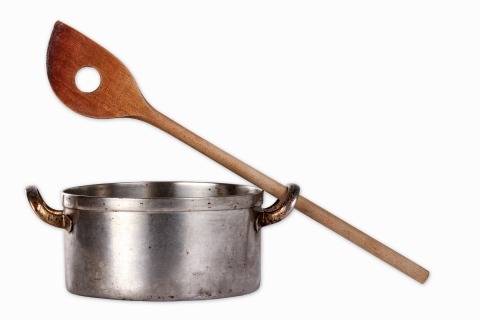6 Expert Tips For Making Jam Or Jelly
If you make fruit preserves each year, here are a few expert tips from Robin Ripley, author of Wisdom for Home Preservers by Taunton Press to help you perfect the process:
Pick a Heavy Pot
The combination of heat and sugar makes jam easy to burn. To reduce the risk of ruining your jam, pick a heavy-bottomed pot for the job. The best jam pot is made of lined copper and is low and wide with sloping sides. Unfortunately, it comes with a price tag that boggles the mind. You don't need to spend a fortune, though, if you pick a jam pot with the heaviest bottom you can find.
(Credit: Shutterstock)
Beware of Doubling Your Recipe
Jam and jelly making are cases where more is not better. Making a double or triple batch at one time will require longer cooking time, which can cause the fruit to overcook and break up. It's better to make two separate batches.
(Credit: Shutterstock)
Make Jams and Jellies on a Dry Day
Some home preservers will warn you against making jams or jellies on a rainy day. The reasoning is that the jam or jelly will absorb moisture from the air, making it less likely that it will set properly. For most of us, this is probably less of an issue today than it was in the days before air conditioning made our lives so much more comfortable. If you find your rainy day jam or jelly didn't set and all the other factors that go into a successful jam or jelly were A-okay, then try again — on a sunny day.
(Credit: Shutterstock)
Different Fruits Have Different Amounts of Pectin
Pectin levels vary between different types of fruit and even between more immature and fully ripe fruits of the same type. Pectin is more highly concentrated in underripe fruit and in seeds, pits, cores, rinds, and membranes of the fruit. High pectin fruits include apples, citrus rinds, cranberries, currants, plums, grapes, and quinces. Low-pectin fruits include apricots, blueberries, cherries, peaches, pears, pineapples, raspberries, and strawberries. Vegetables, such as carrots, that are used in making jams and jellies are low in pectin.
(Credit: Shutterstock)
Make Your Own Superfine Sugar
Foods, like fruit curds, that are not heated to the kind of high temperatures that break down sugar crystals, sometimes call for superfine sugar. Superfine sugar, sometimes called caster sugar, is granulated white sugar. Superfine sugar can be difficult to find. Don't make the mistake of thinking confectioners sugar is superfine sugar; it's not. If you jam recipe calls for superfine sugar and you can't find it, you can substitute granulated white sugar processed briefly in a blender or food processor.
(Credit: Shutterstock)
Try a Microwave Jam Recipe
If you don't have time for a full-blown jam-making and -processing project, you can make a quickie jam by using a recipe that takes advantage of your microwave oven. You can make two to four ½-pint jars of jam in about 30 minutes of hands-on work time. Since it isn't processed in a hot-water bath canner, microwave jams should be eaten right away or stored in the refrigerator.
(Credit: Shutterstock)

